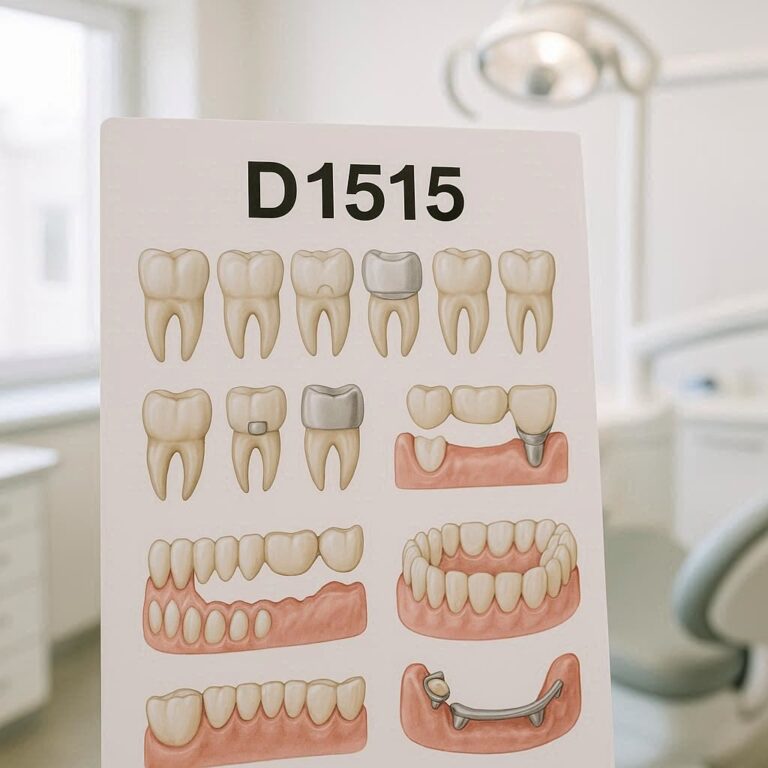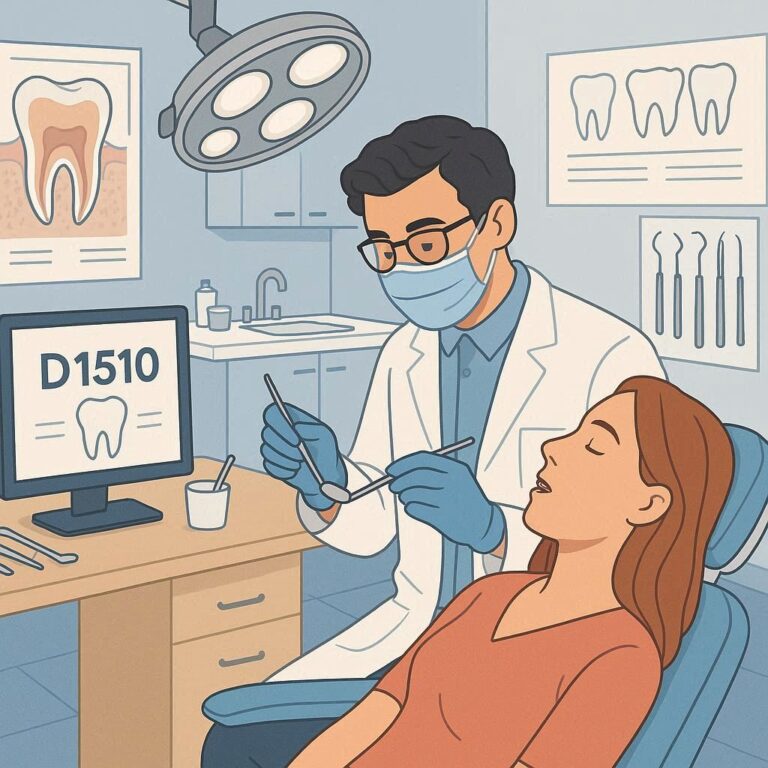d2740 dental code
1. What is Dental Code D2740?
Dental code D2740 is a widely recognized procedure code used in dentistry for full coverage restorations involving porcelain crowns. These crowns are typically used to restore damaged teeth, enhance aesthetics, and improve functionality. Understanding this code is crucial for both dental professionals and patients to ensure accurate billing, insurance claims, and understanding the scope of the procedure.

2. D2740 Dental Code Definition
The D2740 dental code refers specifically to a porcelain crown that covers the entire tooth. The American Dental Association (ADA) defines this code as a “Crown – porcelain/ceramic substrate.” It is often used when a tooth is extensively decayed or damaged and requires a full coverage restoration that provides both durability and aesthetic appeal.
3. D2740 Dental Code Cost
The cost associated with dental code D2740 can vary significantly depending on various factors, including the dentist’s experience, geographical location, and the complexity of the case. On average, patients can expect to pay between $800 and $3,000 per crown. This range reflects differences in material quality, laboratory fees, and whether the crown is covered by dental insurance.
Factors Affecting the Cost:
- Material Quality: Higher-end porcelain materials can increase costs.
- Geographic Location: Urban areas tend to have higher costs compared to rural areas.
- Insurance Coverage: Some insurance plans may cover a portion of the crown’s cost, depending on the policy.
4. D2740 Dental Code Description
The D2740 dental code description provides a clear understanding of what this procedure entails. It involves the placement of a porcelain crown that covers the entire tooth surface. This type of crown is particularly favored for its aesthetic properties, as porcelain closely mimics the natural appearance of teeth. It is typically recommended when a tooth has been severely compromised due to decay, fractures, or after root canal therapy.
Procedure Overview:
- Initial Consultation and Assessment: The dentist evaluates the tooth and decides if a D2740 crown is the best option.
- Tooth Preparation: The damaged tooth is reshaped to accommodate the crown.
- Impression Taking: An impression of the tooth is taken to create a custom-fitted crown.
- Temporary Crown Placement: A temporary crown is placed while the final crown is being fabricated.
- Final Crown Placement: The custom-made porcelain crown is bonded to the tooth, restoring its appearance and function.
5. Dental Procedure Code D2740
Dental procedure code D2740 is an essential part of the dental billing process, ensuring that the appropriate procedures are billed accurately. This code helps in the documentation of the clinical necessity of a porcelain crown, supporting the insurance claims process. For dental practitioners, correctly applying this code is crucial for compliance with insurance requirements and ensuring proper reimbursement.
Clinical Relevance:
- Durability: Porcelain crowns are durable and can last many years with proper care.
- Aesthetics: They provide a natural look, making them ideal for visible teeth.
- Functionality: Restores the full function of the tooth, allowing for normal biting and chewing.
6. Detailed Analysis and Clinical Relevance
The D2740 code is not just a billing mechanism; it represents a clinically significant procedure in restorative dentistry. Porcelain crowns are often the treatment of choice for teeth that have lost a substantial amount of structure due to decay or trauma. Their use is particularly common in cases where aesthetic considerations are paramount, such as front teeth or teeth visible when smiling.
Clinical Cases:
- Extensive Decay: When a tooth is too damaged for a simple filling, a D2740 crown can provide the necessary coverage and protection.
- Fractured Teeth: For teeth that have been fractured but can still be salvaged, a porcelain crown can restore both form and function.
- Post-Root Canal Therapy: Teeth that have undergone root canal therapy often require a crown to prevent future fractures, making D2740 a common follow-up procedure.
7. The Importance of Correct Coding in Dental Practice
Accurate coding in dental practice is essential for several reasons:
- Insurance Reimbursement: Correct coding ensures that the dental office is reimbursed appropriately by insurance companies.
- Legal Compliance: Proper use of codes helps avoid legal issues related to insurance fraud or billing errors.
- Patient Communication: Clear coding allows for better communication with patients regarding the procedures being performed and their associated costs.
8. Case Studies Involving D2740
Case Study 1: Aesthetic Restoration of Anterior Teeth
- Patient: 45-year-old female with significant discoloration and wear on front teeth.
- Procedure: Application of D2740 porcelain crowns to restore aesthetics and function.
- Outcome: The patient achieved a natural-looking smile with improved dental function.
Case Study 2: Post-Trauma Tooth Restoration
- Patient: 30-year-old male with a fractured molar due to an accident.
- Procedure: A D2740 crown was placed to restore the tooth.
- Outcome: The tooth’s structural integrity and function were successfully restored.
9. FAQs
Q1: What is the D2740 code used for? A1: The D2740 code is used for a full coverage porcelain crown, typically when a tooth is damaged or decayed beyond the point where a filling would suffice.
Q2: How long does a D2740 crown last? A2: With proper care, a porcelain crown can last anywhere from 10 to 15 years, or even longer.
Q3: Is a D2740 crown covered by insurance? A3: Many dental insurance plans cover a portion of the cost of a D2740 crown, but coverage can vary widely depending on the specific plan.
Q4: What are the alternatives to a D2740 crown? A4: Alternatives may include composite fillings, inlays, onlays, or other types of crowns depending on the condition of the tooth.
Q5: What is the recovery time after getting a D2740 crown? A5: Most patients experience minimal discomfort and can return to normal activities almost immediately after the procedure.
10. Conclusion
Dental code D2740 plays a vital role in restorative dentistry, providing a framework for the accurate application of porcelain crowns. Understanding this code, along with its cost, description, and clinical relevance, is essential for both dental professionals and patients. The correct use of D2740 ensures that patients receive the appropriate treatment and that dental practices maintain compliance with insurance requirements.
Additional Resources
- American Dental Association (ADA): ADA Dental Procedure Codes
- National Institute of Dental and Craniofacial Research: Restorative Dentistry
- Journal of Prosthetic Dentistry: Porcelain Crowns and Their Applications


